Canyon Aeroad: new aero bike is faster, lighter, and comes with clever adjustable handlebars
Is the new Aeroad the fastest bike in the world? Canyon thinks so
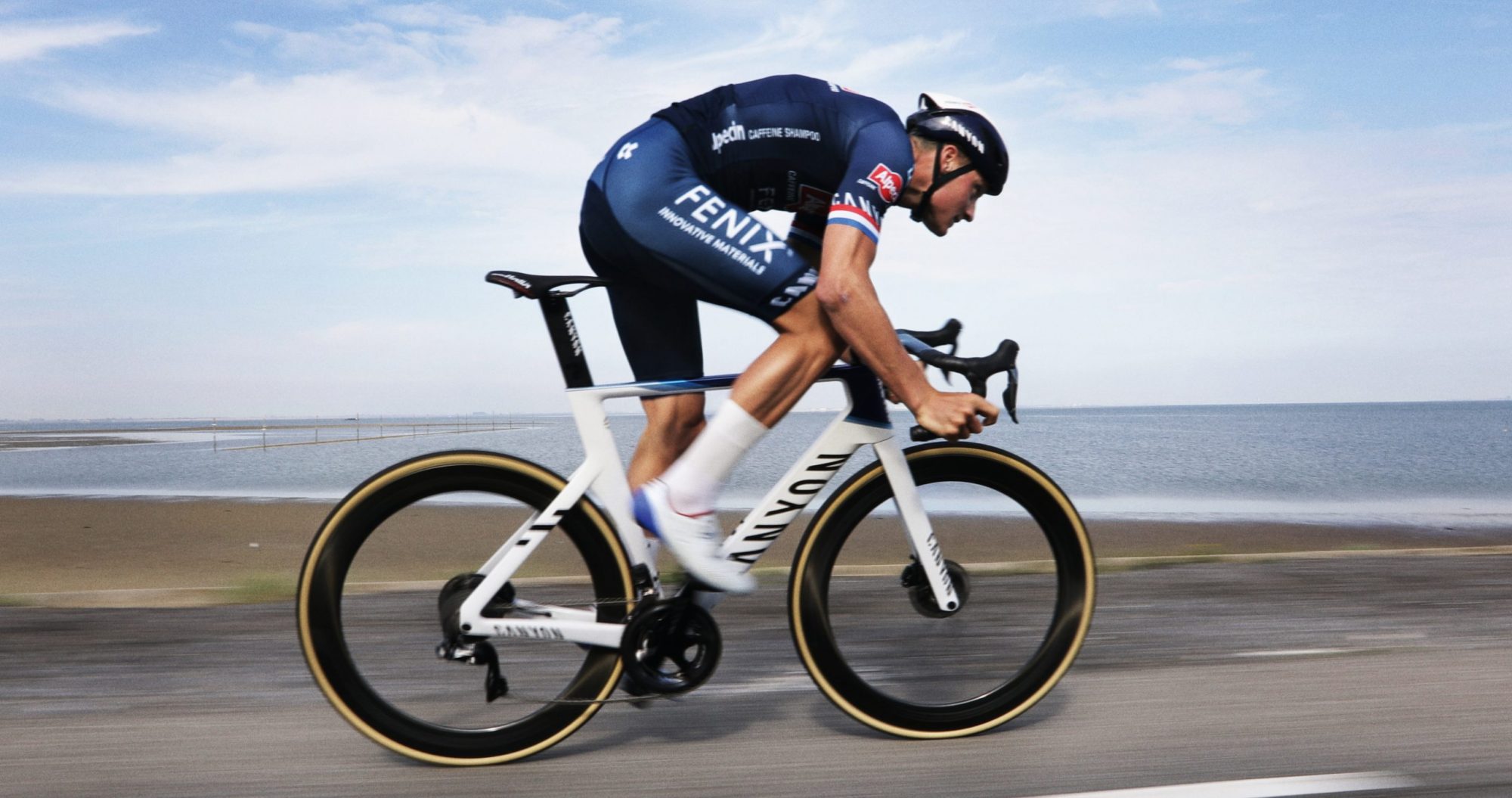

*Update February 8, 2020: Canyon responds to Aeroad seatpost concerns* - Canyon has received complaints over the seatpost on its 2021 Aeroad.
The new Canyon Aeroad has finally landed, replacing the brand's original model which has stood the test of time at a full six years in the limelight.
The original Aeroad has been a mainstay of Canyon's road range since its arrival. As the brand's aerodynamic race bike it has been responsible for a vast number of Canyon’s race successes on the WorldTour stage, not to mention being an extremely popular platform among the general public.
But now Canyon has finally released the new Aeroad, a bike that by its admission has been waiting in the wings for some time (it's been teased to the public since early this year through Zwift adverts and such like). It's a case of all change yet business as usual in terms of the new Aeroad; as per expectation, drag and weight have been snipped away at - but there's also some cool adjustments to the front end which really increase the bike's adjustability, making rider tuning much easier.
>>> Canyon Aeroad CF SL Disc 8.0 review
Put the two frames side by side and the most striking differences are the tube dimensions of the new Aeroad. Where the old version was stick-thin and slender the new Aeroad is all muscle. This is most obvious in the rear quarters of the frame with the seatstays and seat post displaying far more obvious aero influences.
In fact aerodynamics is just one part of the design process of the new Aeroad. Canyon's development goals for the new frame also centered around weight reduction, modern integration, adaptability, increased comfort, sharper handling, and finally creating a clean design.
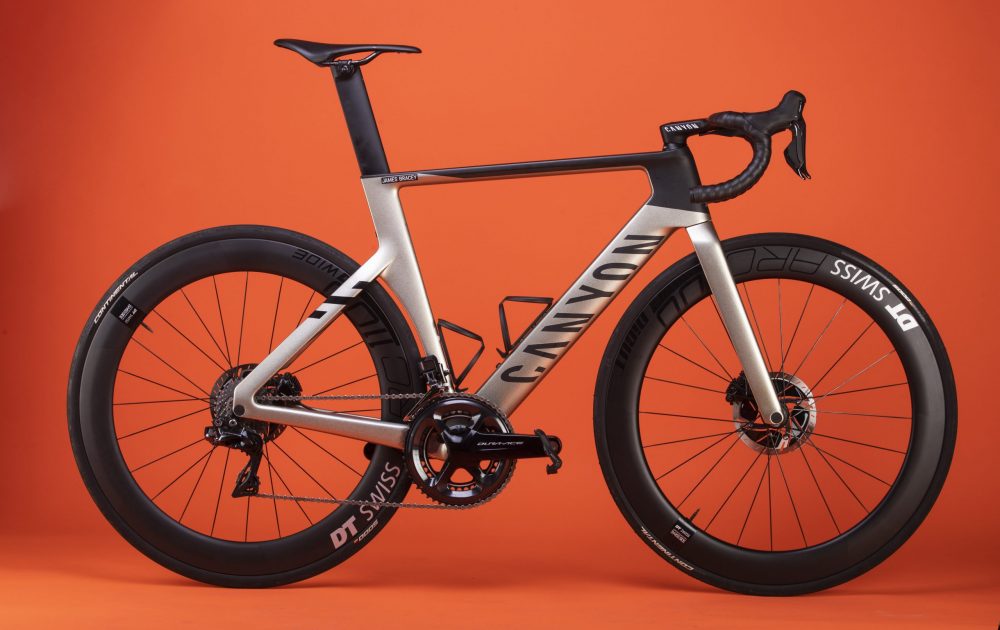
The aerodynamics of the new Aeroad
Of course, Canyon will tell us that the new Aeroad is faster than the incumbent model and to be honest it doesn't take a genius to tell that the ultra-clean profile with enclosed cables will be a slippery beast.
Canyon collaborated with aerodynamics experts Swiss Side to develop the new frame. According to Canyon, the original Aeroad went through three CFD test loops (three prototypes) to be refined to the point of production whereas this new Aeroad went through 22 CFD test loops/prototypes and took the CFD engineer four months of solid computation to get it to the point where wind tunnel testing could take over.
Returning to the development targets of the new Aeroad, the goal was to create a faster bike overall. This meant parameters like lightness, stiffness to weight, comfort, and ergonomics also had an important influence on the final design. For this reason, the final form of the new Aeroad was not the fastest Canyon could have created according to CFD and wind tunnel testing.
The fastest iteration tested, named "Geometry 19", had incredibly long chord tube profiles at the fork, handlebar tops, seat tube, seatpost, and chainstays, right at the limit of UCI regulations. Generally the longer you go, the better the aero performance will be, however, the extra material required to create these profiles was found to be detrimental to weight targets and had a negative effect on ride quality.
Ditto, super-deep handlebar tops reduce drag the most, yet have terrible ergonomics when climbing or cruising on the tops. In order to answer the original development goals Swiss Side and Canyon's aerodynamicists, development engineers, product managers and designers all set out to refine this design to better meet the overall brief. The key was to work out how much of the fastest form could be preserved in order to create the best performing bike overall.
Canyon has of course produced tangible figures to show the drag reduction of the new Aeroad over the existing version. As a frame only it creates 7.4 watts less drag than the outgoing model. With a rider (dummy legs in the wind tunnel), this is reduced to a 4.4-watt difference. Adding two bottles actually decreases drag by 5.4 watts.
Refined construction methods increase stiffness and decrease weight
The key focus was ensuring the new Aeroad hit the desired stiffness in key areas, namely the head tube and bottom bracket. The role of the down tube was identified as being vital to this job. As with the previous Aeroad, Canyon's engineers pushed down tube width as far as they could before it had a negative impact on aero performance in order to provide a solid core to the frame. Higher volume tubes are geometrically stiffer and stronger, which means they require less material so can be made lighter too. Finally, on the topline Aeroad CFR Canyon selectively applied the same super-high modulus and super-high tensile fibres that first featured on the Ultimate CFR.
The end result is a 14 per cent gain in frameset stiffness and 168-gram loss in mass for the new Aeroad CFR frame over the previous Aeroad CF SLX.
We weighed both medium and large Aeroad CFR models and the overall weights (with Dura-Ace power meter, two bottle cages, and Garmin mount) come out as 6.89kg and 7.17kg respectively.
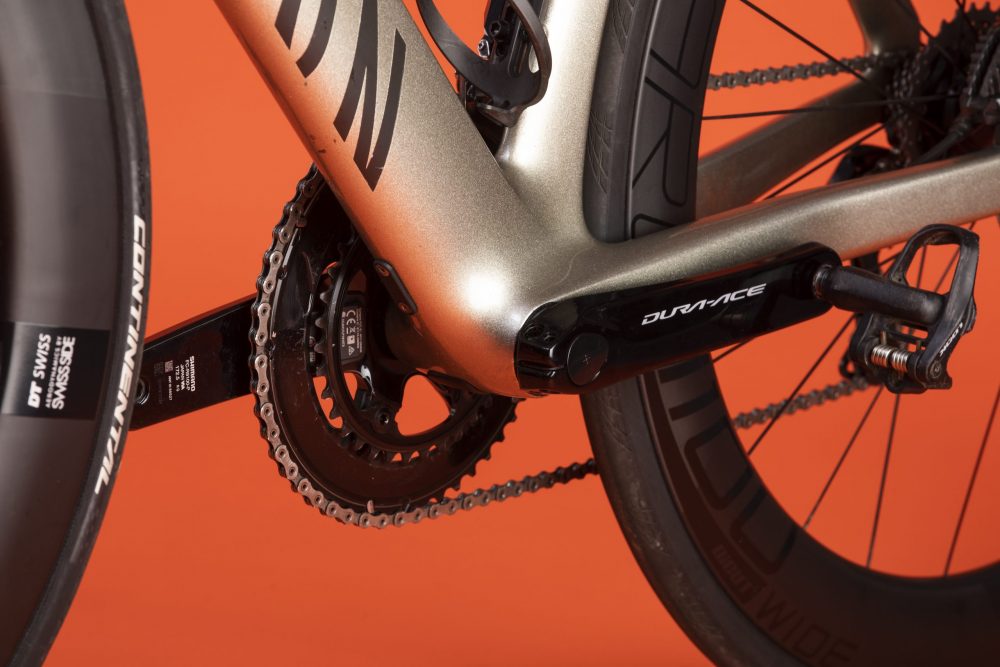
Geometry changes
The new Aeroad has had some minor tweaks to the geometry to broaden the appeal and usability of the frame outside of just the purist racer. A few millimeters have been shaved from the reach on all frame sizes whilst the stack height has been marginally increased. These changes now mean the Aeroad mirrors the geometry of the Ultimate to bring a bit more homogeneity across Canyon's road collection.
With the release of the first Aeroad Disc in 2017, Canyon had to extend the chainstay length over the rim brake Aeroad by 5mm, from 410mm to 415mm, to get the right chainline with wider rear hub spacings. This made the handling of the Disc version feel slightly slower when tested back to back with the rim brake bike. On the current generation of disc brake groupsets, extended chainstays are no longer required. That means Canyon could revert back to shorter 410mm chainstays across all sizes to guarantee the same levels of agility offered by the original rim brake Aeroad.
Standout features of the new Canyon Aeroad
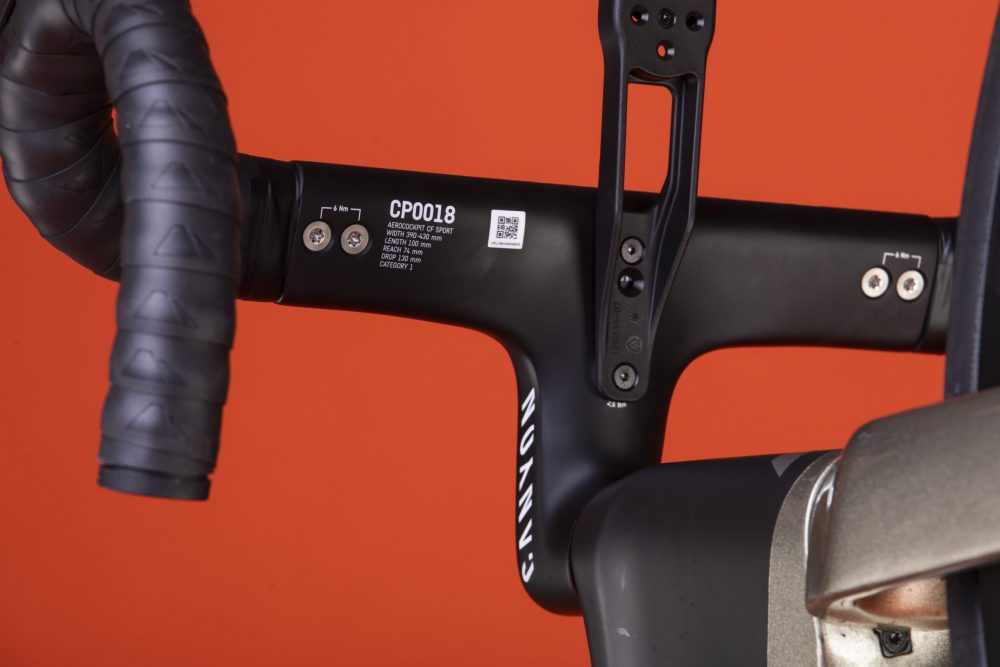
Standout features of the new Aeroad are concentrated at the front end of the frame. Canyon's latest one-piece carbon 'cockpit' CP0018 features rider adjustable width. Two bolts at either side of the central stem section can be removed to manually alter the overall handlebar width from 39cm to 43cm (smaller frame sizes have handlebars that go even narrower).
The new Aeroad also utilises a new reimagining of the traditional quill stem/steerer arrangement to allow for height adjustment without the need to permanently cut the steerer tube. This is a simple operation and allows the rider to slam the setup for racing and then increase the height for more comfort whilst training. A single bolt handles headset and stem clamping duties to simplify matters even further.
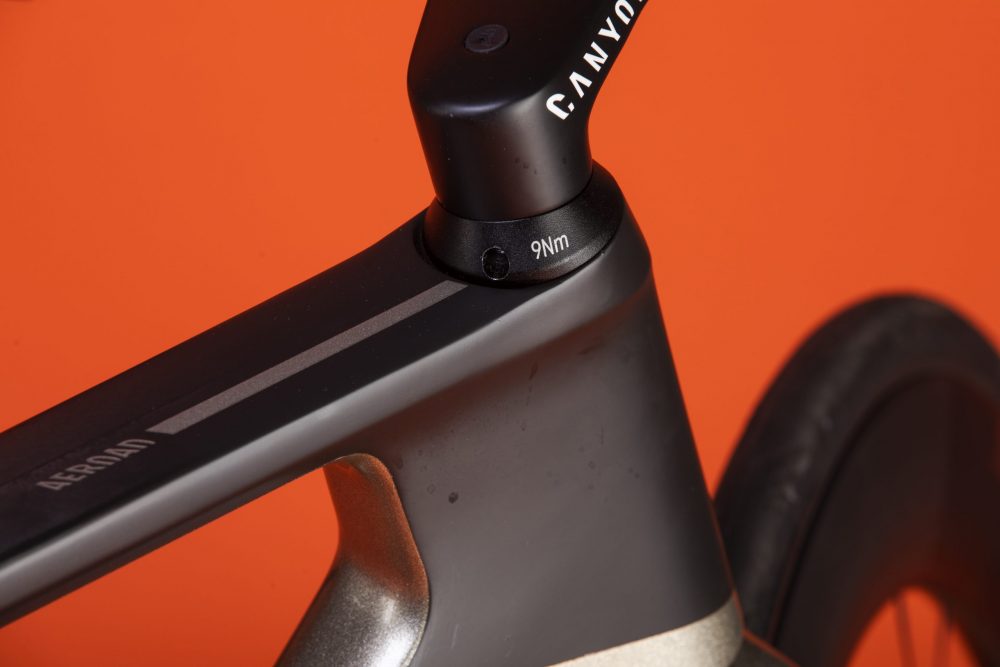
The seatpost has also increased in compliance despite it being far more aerodynamic in shaping when compared to the existing Aeroad's seatpost. This new post is cut to half the width under the point in which it enters the frame and combines with a much lower positioned seat clamp to introduce more flex to further enhance the ride.
Finally, as a nod to the trifecta of aero, comfort, and handling Canyon has supplied the Aeroad with asymmetric wheels and rubber, something it has been doing on the off-road side of things for quite a while. The front wheel features a narrower rim width coupled with a 25mm width tyre to keep things as aero as possible whilst the rear - where aero gains are not quite as crucial - has a wider rim combined with a 28mm tyre for increased grip and comfort.
Eight models split over three frame levels are being offered for the new Aeroad, ranging from £3,399 for the entry point Aeroad CF SL 7, with the Aeroad CF SLX 8 Di2 coming in at £5,199, and the flagship Aeroad CFR 9 EPS costing £9,299.
The CF SL models will be available in eight sizes from XXXS - XXL with the two smallest options fitted with smaller 650b wheels rather than 700c. CF SLX and CFR models will be available in sizes XXS-XXL.
The Canyon Aeroad 2021 range highlights
Canyon Aeroad CFR Disc 9 EPS, £9,299
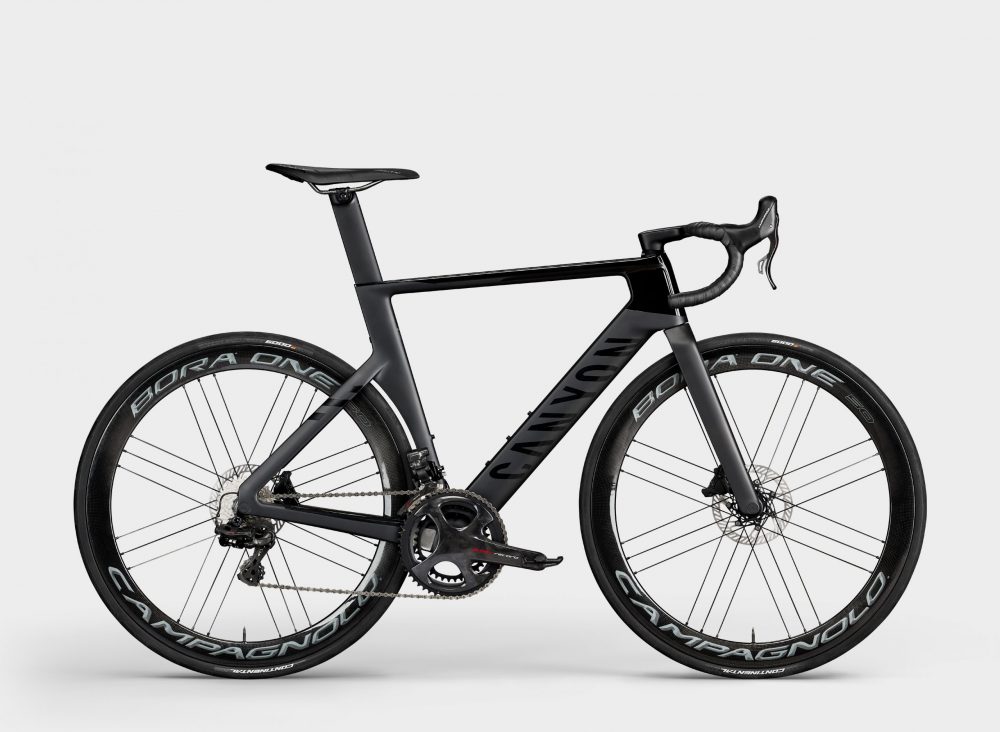
- Canyon Aeroad CFR frame and fork
- Campagnolo Super Record EPS 12 speed electronic groupset
- Campagnolo Bora One wheelset
- Continental Grand Prix 5000 tyres, 25mm front, 28mm rear
- Canyon CP0018 carbon bar/stem
- Canyon SP0046 carbon seatpost
Canyon Aeroad CFR Disc 9 Di2, £7,699

- Canyon Aeroad CFR frame and fork
- Shimano Dura Ace Di2 11 speed electronic groupset
- DT Swiss ARC 1100 Dicut 62 wheelset
- Continental Grand Prix 5000 tyres, 25mm front, 28mm rear
- Canyon CP0018 carbon bar/stem
- Canyon SP0046 carbon seatpost
Canyon Aeroad CF SLX Disc 8 Di2, £5,199
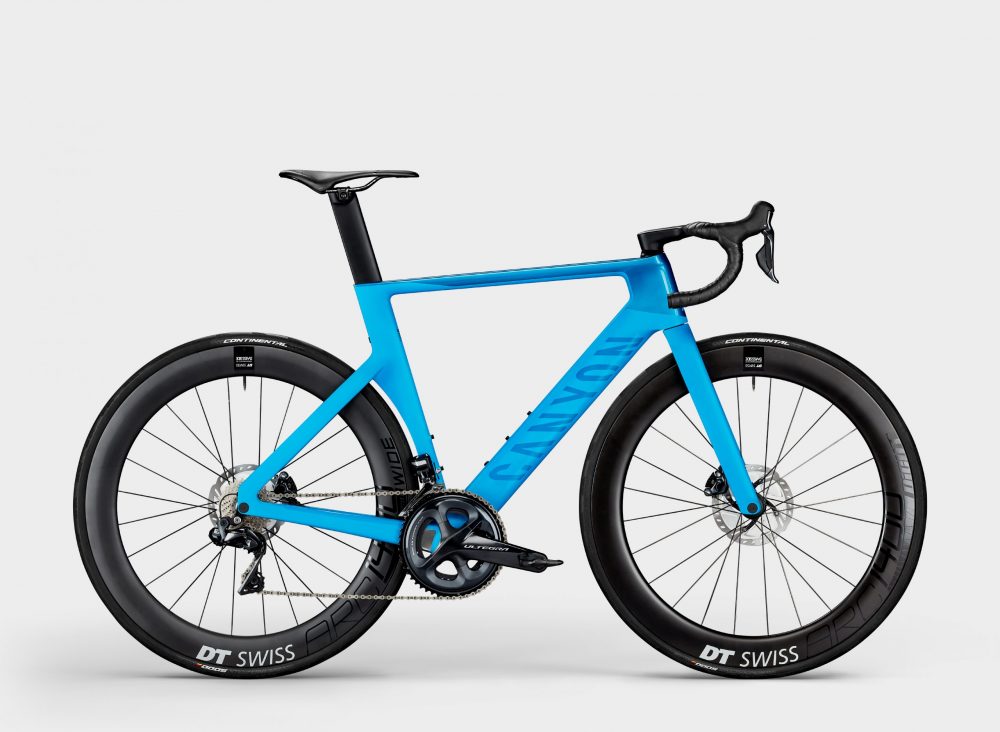
- Canyon Aeroad CF SLX frame and fork
- Shimano Ultegra Di2 11 speed electronic groupset
- DT Swiss ARC 1400 Dicut 62 wheelset
- Continental Grand Prix 5000 tyres, 25mm front, 28mm rear
- Canyon CP0018 carbon bar/stem
- Canyon SP0046 carbon seatpost
Canyon Aeroad CF SL Disc 8, £3,799

- Canyon Aeroad CF SL frame and fork
- Shimano Ultegra 11 speed mechanical groupset
- Reynolds AR 58/62 DB wheelset
- Continental Grand Prix 5000 tyres, 25mm front, 28mm rear
- Canyon CP10 carbon bar/stem
- Canyon SP0046 carbon seatpost
Canyon Aeroad CF SL Disc 7, £3,399
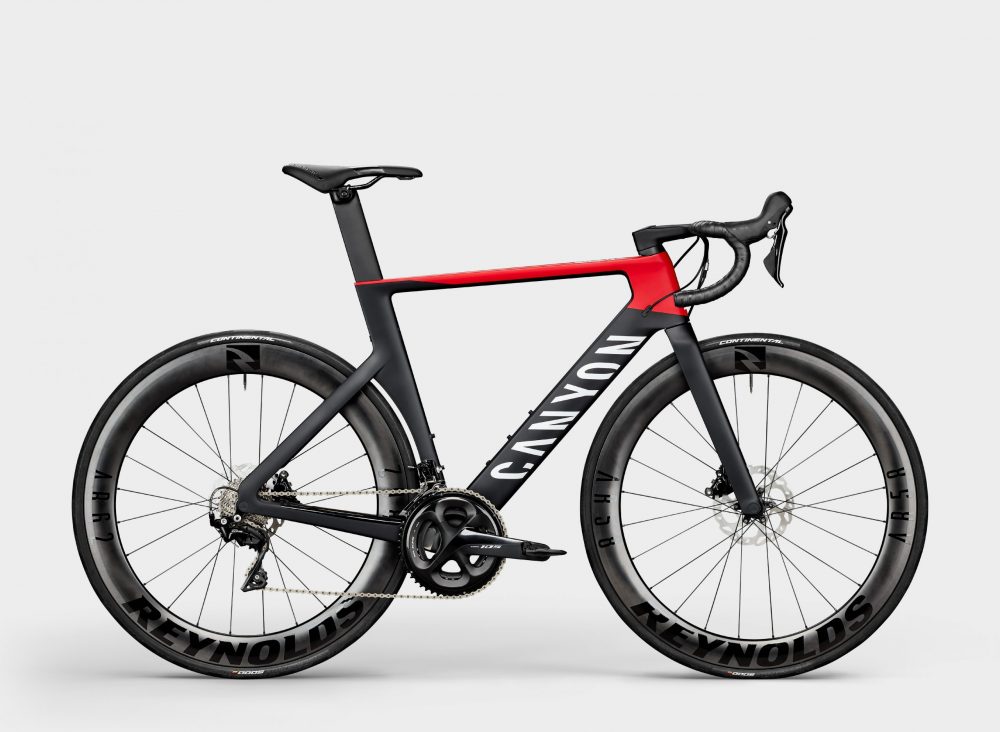
- Canyon Aeroad CF SL frame and fork
- Shimano 105 11 speed mechanical groupset
- Reynolds AR 58/62 DB wheelset
- Continental Grand Prix 5000 tyres, 25mm front, 28mm rear
- Canyon CP10 carbon bar/stem
- Canyon SP0046 carbon seatpost
The new Canyon Aeroad range is available to order through Canyon's website. Availability is expected to be complete from Tuesday 6th October 2020.

Thank you for reading 20 articles this month* Join now for unlimited access
Enjoy your first month for just £1 / $1 / €1
*Read 5 free articles per month without a subscription

Join now for unlimited access
Try first month for just £1 / $1 / €1
Get The Leadout Newsletter
The latest race content, interviews, features, reviews and expert buying guides, direct to your inbox!
James Bracey's career has seen him move from geography teacher, to MBR writer, to Cycling Weekly's senior tech writer and video presenter. He possesses an in-depth knowledge of bicycle mechanics, as well as bike fit and coaching qualifications. Bracey enjoys all manner of cycling, from road to gravel and mountain biking.
-
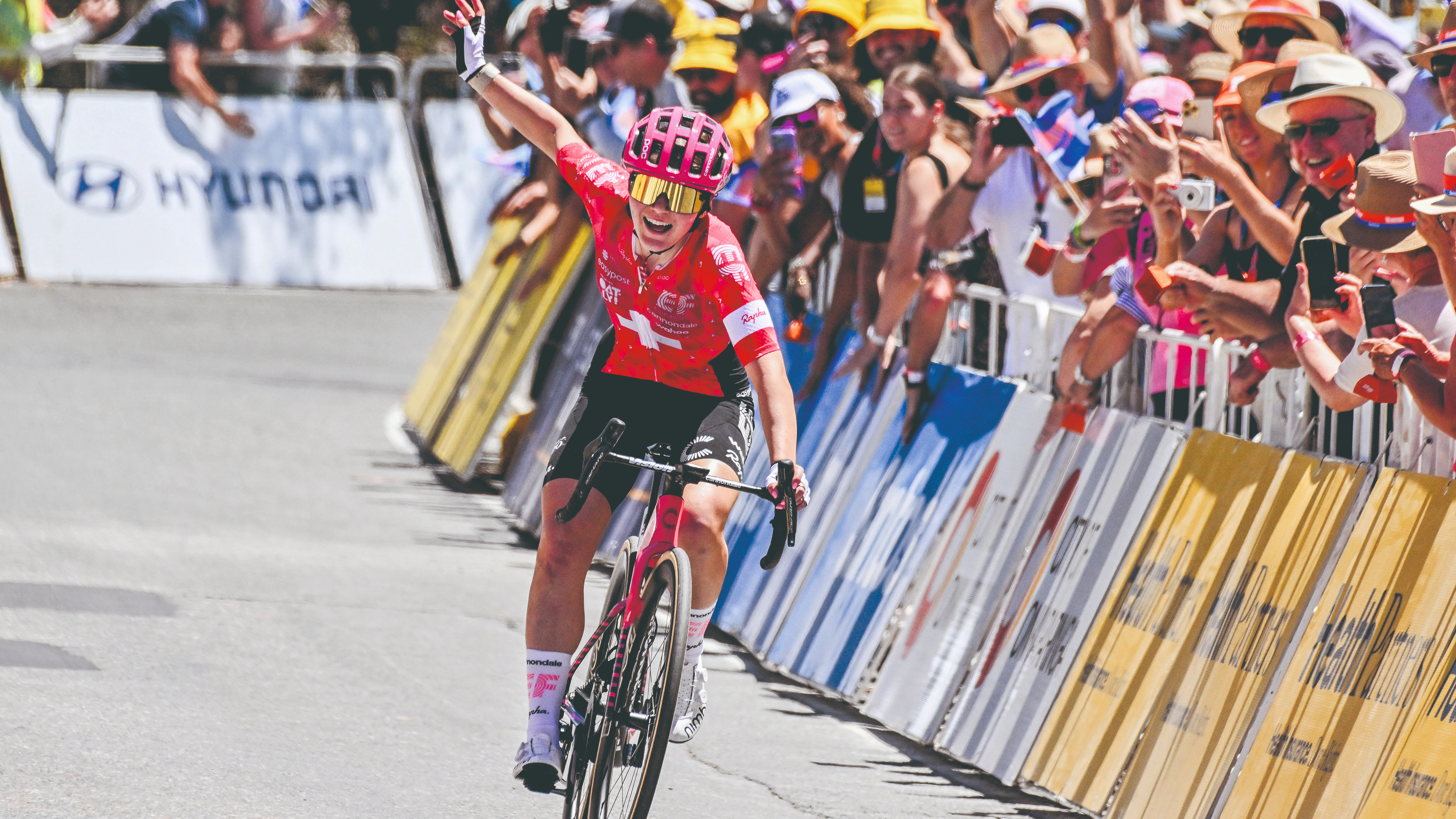 How do the pros train? Noemi Rüegg's 26 hour training week
How do the pros train? Noemi Rüegg's 26 hour training weekWinner of this year’s Tour Down Under, the EF Education-Oatly rider is a climber whose talent is taking her to the top
By Chris Marshall-Bell
-
 Save £42 on the same tyres that Mathieu Van de Poel won Paris-Roubaix on, this Easter weekend
Save £42 on the same tyres that Mathieu Van de Poel won Paris-Roubaix on, this Easter weekendDeals Its rare that Pirelli P-Zero Race TLR RS can be found on sale, and certainly not with a whopping 25% discount, grab a pair this weekend before they go...
By Matt Ischt-Barnard